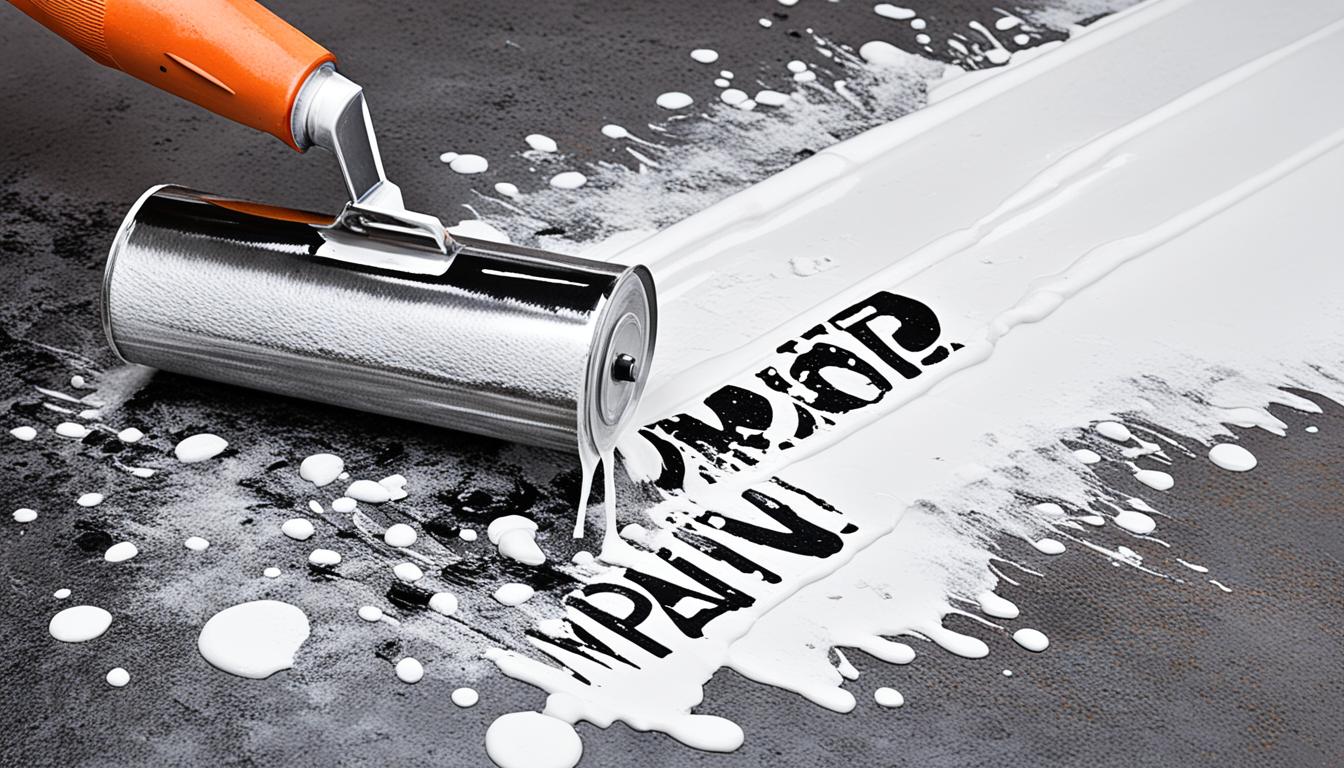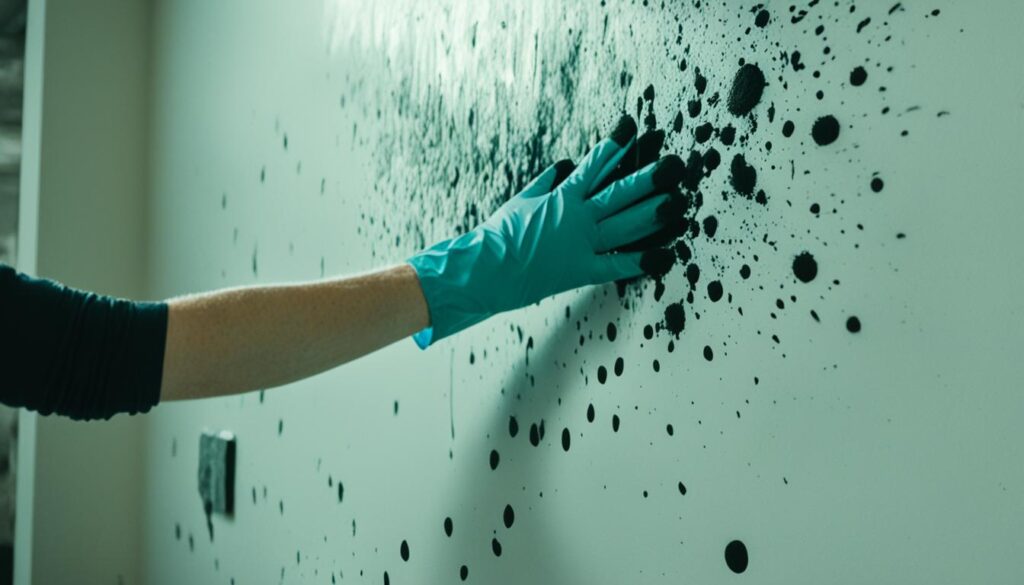
Essential Tips for can you paint over Mold
Dealing with mold in your home or business can be a concerning and daunting task. One question that often arises is whether it is safe to paint over mold. While the idea of simply covering up the mold with a fresh coat of paint may seem tempting, it is important to approach mold remediation with caution for long-lasting results. In this section, we will explore the necessary steps and precautions to take for proper mold remediation, as well as effective strategies to prevent mold growth in the future.
- Painting over mold without proper remediation can lead to potential health risks and further damage.
- Prioritize mold remediation by thoroughly removing the mold before applying paint.
- Perform a mold inspection to identify hidden areas of mold growth.
- Prevent mold recurrence by using mold-resistant paint, controlling humidity, ensuring proper ventilation, and regular maintenance.
- Contact a professional mold assessment and remediation service for expert assistance and comprehensive evaluation.
Proper Mold Remediation for Paint
When it comes to painting over mold, proper mold remediation is essential. Before you can achieve a clean and long-lasting paint job, it is crucial to effectively remove the mold from surfaces. This section will provide you with detailed instructions on how to ensure a safe and mold-free environment for painting.
The Importance of Mold Inspection
Before you begin the remediation process, it is vital to conduct a thorough mold inspection. Mold often grows in hidden areas, making it crucial to identify all affected spaces. Hiring a professional mold inspector like MoldMaster Services to assess your property will help you locate any hidden mold colonies.
During the inspection, the mold inspector will:
- Visually inspect areas with signs of moisture or water damage
- Use moisture meters and thermal imaging cameras to identify areas with high moisture content
- Collect air and surface samples to test for mold spores
Based on the inspection findings, the remediation process can be tailored to the specific mold problem in your property.
Proper Steps for Mold Remediation
Once the mold has been identified and the scope of the problem has been determined, it’s time to start the remediation process. Follow these steps to ensure effective mold removal:
- Isolate the affected area: Seal off the area to prevent mold spores from spreading to other parts of the property.
- Wear protective gear: Put on gloves, goggles, and an N95 respirator mask to protect yourself from mold spores.
- Remove mold-damaged materials: Dispose of materials that are heavily contaminated with mold, such as drywall, carpet, and insulation.
- Clean the surfaces: Scrub the mold-infested surfaces with a mixture of detergent and water. Ensure thorough cleaning to remove all visible mold.
- Dry the area: Use dehumidifiers and fans to dry the area completely, preventing further mold growth.
- Monitor and retest: After remediation, it’s important to monitor the area and conduct follow-up testing to ensure the mold has been effectively removed.
Remember, painting over mold without proper remediation can result in recurring mold issues and may jeopardize the integrity of your paint job. Take the time to complete the necessary remediation steps for a cleaner and healthier environment.
Mold Remediation Before Painting: A Necessary Precaution
“Proper mold remediation is key to painting over mold. Skipping this step can lead to the mold resurfacing, causing damage to both your paint job and your health.” – Lisa Smith, Mold Remediation Expert, MoldMaster Services
By following the instructions in this section, you will be well-equipped to tackle mold remediation before painting. Remember, when it comes to mold, prevention is always better than cure.

Preventing Mold for Long-Lasting Results
Prevention is key when it comes to maintaining a mold-free environment. After completing the mold remediation process and painting over the affected areas, it’s important to implement effective strategies to prevent mold growth in the future. By following these tips, you can ensure long-lasting results and a healthier living space.
1. Use Mold-Resistant Paint
One of the most effective ways to prevent mold growth on painted surfaces is by using mold-resistant paint. This specialized paint contains antimicrobial additives that help inhibit the growth of mold and mildew. When selecting paint for your project, look for products labeled as “mold-resistant” or “mildew-resistant” for optimal protection.

2. Control Humidity Levels
Mold thrives in moist environments, so controlling humidity levels is crucial for mold prevention. Keep indoor humidity below 50% by using dehumidifiers in areas prone to moisture, such as basements and bathrooms. Additionally, fix any leaks or water damage promptly to prevent the accumulation of excess moisture.
3. Ensure Proper Ventilation
Proper ventilation is essential for preventing mold growth. Ensure that your home is adequately ventilated, especially in areas where moisture is commonly generated, such as the kitchen and bathroom. Use exhaust fans or open windows when cooking or showering to remove excess steam and moisture from the air.
4. Practice Regular Maintenance
Regular maintenance is key to preventing mold from returning. Keep an eye out for any signs of water leaks or moisture issues in your home and address them promptly. Regularly inspect areas that are prone to mold growth, such as around windows, in basements, and in crawlspaces. By staying proactive and addressing any potential issues early on, you can minimize the risk of mold recurrence.
By implementing these preventive measures, you can ensure long-lasting results after painting over mold. Remember that mold prevention is an ongoing process, and consistent maintenance is essential for keeping your home mold-free.
Conclusion
In conclusion, when it comes to painting over mold, proper mold remediation should always be the top priority. By taking the necessary steps to remove mold and prevent its recurrence, you can ensure a healthier and longer-lasting paint job for your home or business.
If you suspect mold growth in your property, it is highly recommended to seek professional assistance from a reputable mold assessment and remediation service like Fix Mold Miami. Their team of experts can provide a comprehensive evaluation and guide you through the process of effectively removing mold, ensuring a safe and mold-free environment.
Remember, prevention is key. Using mold-resistant paint, controlling humidity, promoting adequate ventilation, and practicing regular maintenance are all essential in minimizing the risk of mold growth after painting. By following these preventive measures, you can create a long-lasting and mold-free space.




